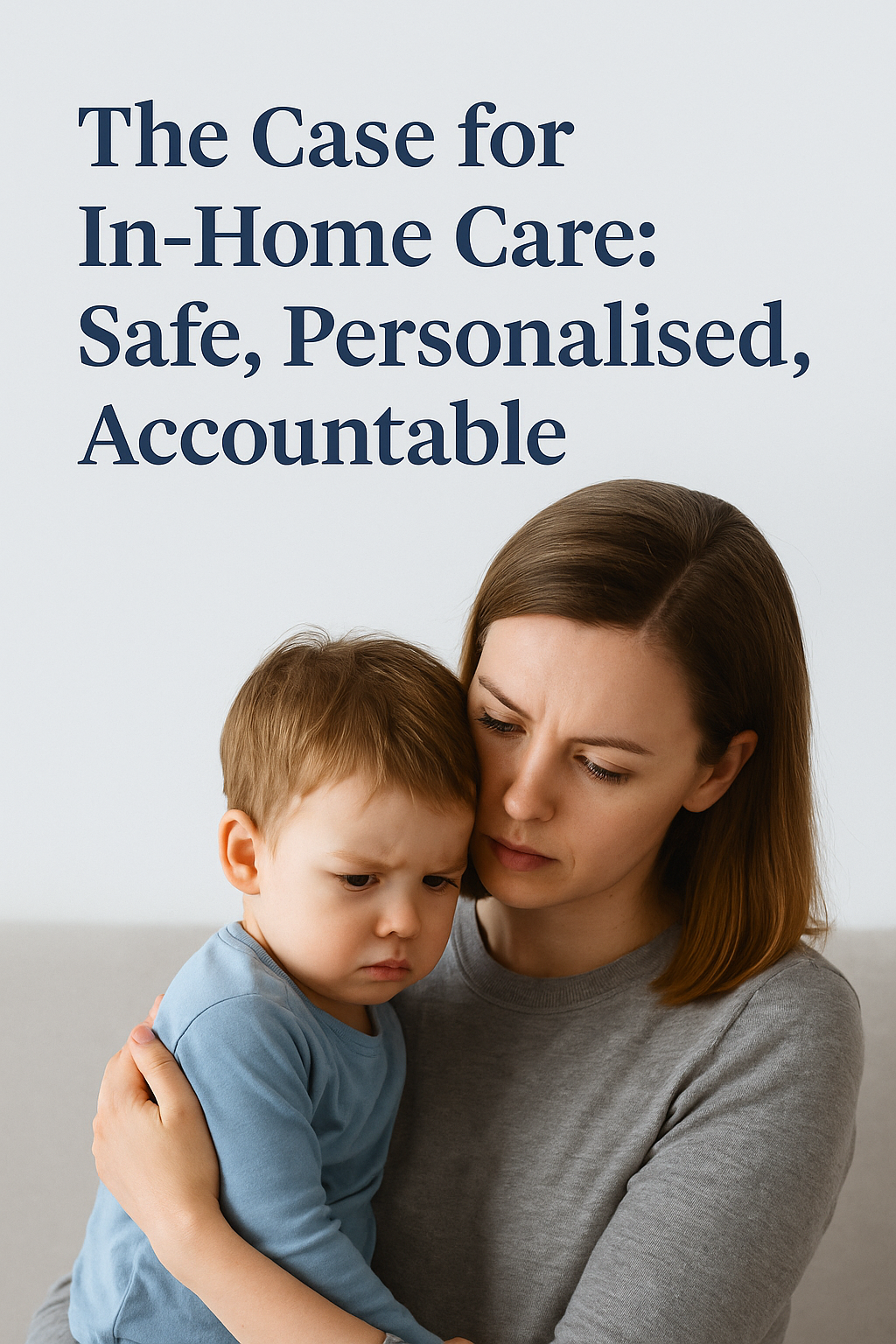The Real Cost of Cheap Childcare

Calls Grow for Class Action Against
Centres After Abuse Scandal
By Justine Murray The Australian Nanny Agency – 28 July 2025
A heartbreaking series of revelations is shaking the foundation of Australia’s early childhood education sector, with thousands of families now facing the unthinkable: abuse allegations within the very childcare centres entrusted with their children’s safety.
What started as a single police investigation into one former childcare worker has now widened into a national moment of reckoning — and a growing chorus of parents and advocates are asking:
Is centre-based care still safe? And if not — what are the alternatives?
A National Outcry: What Happened?
The catalyst for this firestorm was the arrest of former childcare employee Joshua Brown, who now faces over 70 charges relating to alleged offences against young children under his care. Brown worked across 20 to 23 centres in Victoria between 2017 and 2025, many of them operated by major childcare providers, including G8 Education.
Since his arrest, over 2,600 families have been contacted by Victoria Police, and more than 1,200 children have been advised to undergo precautionary STI testing. But for many families, the trauma has already begun.
“I just want to know how this could have happened,” said one Melbourne mother, speaking anonymously. “We raised concerns. We were told everything was fine.”
Class Action Looms:
Families Demand Accountability
Dozens of affected families have now joined together in what is shaping up to be one of the largest class actions in Australia’s childcare history. Legal firm Arnold Thomas & Becker is among several now publicly calling for families to register their interest in a collective lawsuit against the centres and parent companies involved.
On Facebook, legal support groups are rapidly forming, offering guidance and legal aid for parents who believe their child may have been exposed.
"We are reviewing the possibility of a nationwide claim against multiple operators," one legal rep shared in a Facebook Live session. "This isn’t about money. This is about answers, accountability — and change."
How Did This Happen?
Gaps in a Failing System
The tragedy has exposed deep holes in Australia’s fragmented childcare regulation system.
A recent Guardian investigation found that thousands of abuse complaints have been made to regulatory bodies across the country over the past decade — with most not leading to meaningful action or removal of staff. Worse still, many perpetrators were able to continue working, often by moving states or changing employers.
“There is no national database of flagged workers. No shared system for escalating parent concerns,” said Natalie Siegel-Brown, Executive Director of the Office of the eSafety Commissioner. “This is not a loophole — this is a systemic failure.”
The Real Cost of Cheap Childcare
For years, governments have funneled billions into centre-based childcare under the assumption that it offers consistency, oversight, and safety. But the recent scandals are challenging that belief.
“This is a wake-up call,” said Dr. Melissa Kang, paediatrician and advocate for child protection. “Low staff-to-child ratios, high turnover, and pressure to meet occupancy quotas — it’s a recipe for missed red flags.”
Parents agree. One father, whose daughter attended a centre under investigation, described his guilt:
“We chose a ‘top-rated’ centre. Paid thousands. And now we’re being told our daughter might have been exposed to a predator. It makes you question everything.”
The Case for In-Home Childcare Care: Safe, Personalised, Accountable
As the dust settles, many families are now re-evaluating their care choices. One alternative seeing renewed interest? In-home nanny care.
Unlike large centres, in-home care offers:
- One-on-one attention
- A secure, familiar environment
- Higher visibility and transparency
- Greater flexibility to meet each child’s emotional and developmental needs
“It’s time we stop treating nannies as a luxury and start recognising them as an essential form of early childhood education,” says Montana Murray, CEO of the Australian Nanny Agency.
“We personally vet every candidate, require full Working With Children Checks, First Aid, and multiple references. Our carers work in your home, under your watch. That’s peace of mind a centre simply can’t match.”
The Elephant in the Room: Government Rebates
One of the biggest barriers to choosing a nanny is cost. The Child Care Subsidy (CCS) overwhelmingly favours centre-based care, making it hard for families to access support for in-home care — even when it's safer and better suited to their needs.
“This scandal has shown that cheap isn’t always safe,” says Montana . “We’re calling on the federal government to extend CCS rebates to accredited in-home care providers. Families deserve the right to choose what works for them — without being penalised.”
What Can Parents Do Now?
If you're a parent reading this, here’s what you can do:
- Stay informed. Follow updates from Victoria Police, your childcare provider, and the Department of Education.
- Join support groups. Legal teams are actively helping families affected — many are accessible through Facebook.
- Book a consultation. If you're considering switching to in-home care, speak to a trusted nanny agency to understand your options.
- Push for change. Contact your local MP and demand better national systems, better funding for alternative care, and more oversight.
Final Thoughts: This Isn’t Just
About One Man
The Joshua Brown case is not an isolated incident. It’s a symptom of a wider problem — one that places convenience and cost-cutting ahead of child safety.
At the Australian Nanny Agency, we believe every child deserves to be seen, heard, and protected. That’s why we go beyond compliance to build trust-based relationships between families and carers — one home at a time.
Whether you’re a parent seeking a safer path or a policymaker reconsidering what childcare should look like, the time for change is now.
Ready to Talk?
We offer free, confidential consultations to families considering the move to in-home care. Whether you're looking for a full-time nanny, after-school help, or short-term support — we’re here to help.

FAQS What can we do!
Q1: What centres were involved in the current scandal?
Q1: What centres were involved in the current scandal?
The centres included multiple sites across Melbourne, many under the G8 Education umbrella. Full names are still being confirmed by police.
Q2: Is there a class action I can join?
Q2: Is there a class action I can join?
Yes. Law firms like Arnold Thomas & Becker are accepting registrations from affected families. Support groups are also live on Facebook.
Q3: How is nanny care safer?
Q3: How is nanny care safer?
In-home care provides personal oversight, 1:1 attention, and full visibility into daily activities, unlike high-turnover centre staff rotations.
Q4: Can I get a rebate for hiring a nanny?
Q4: Can I get a rebate for hiring a nanny?
At present, most families do not receive CCS for in-home care. However, many are now calling for policy change to make this support available.
Q5: Where can I get help now?
Q5: Where can I get help now?
Contact the Australian Nanny Agency for personalised help. We’re here to guide you with compassion and professionalism.
READ MORE










